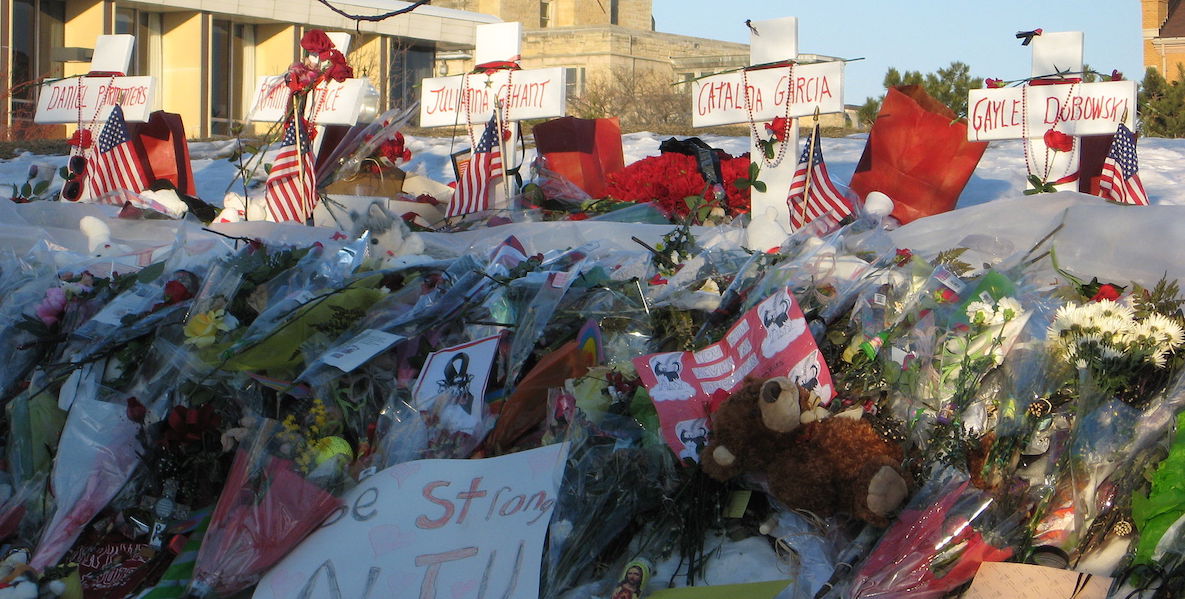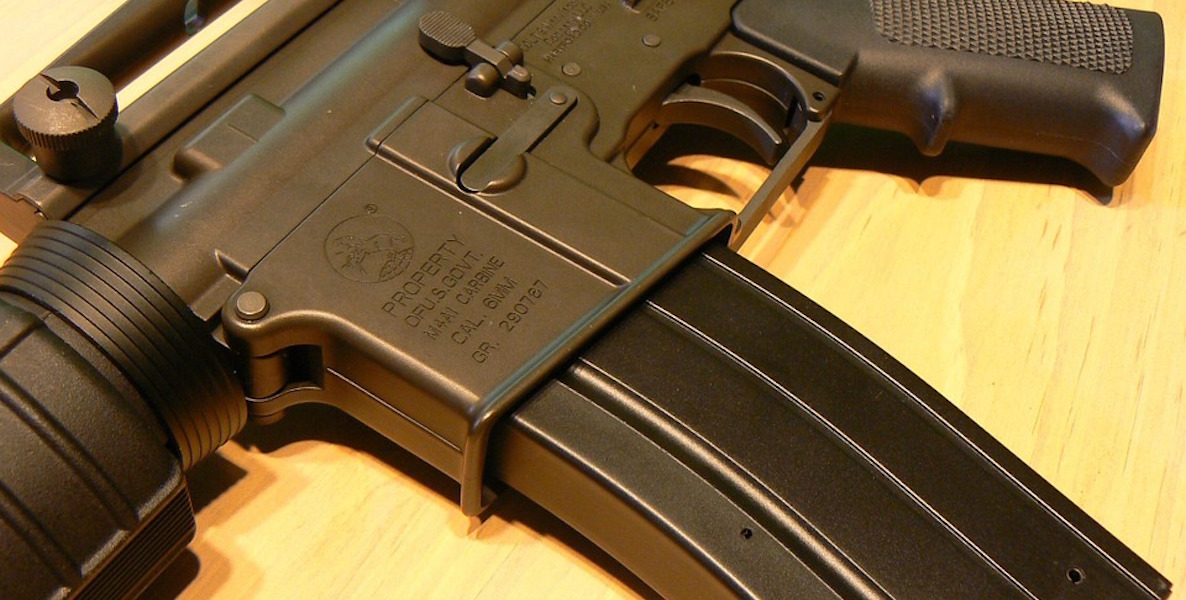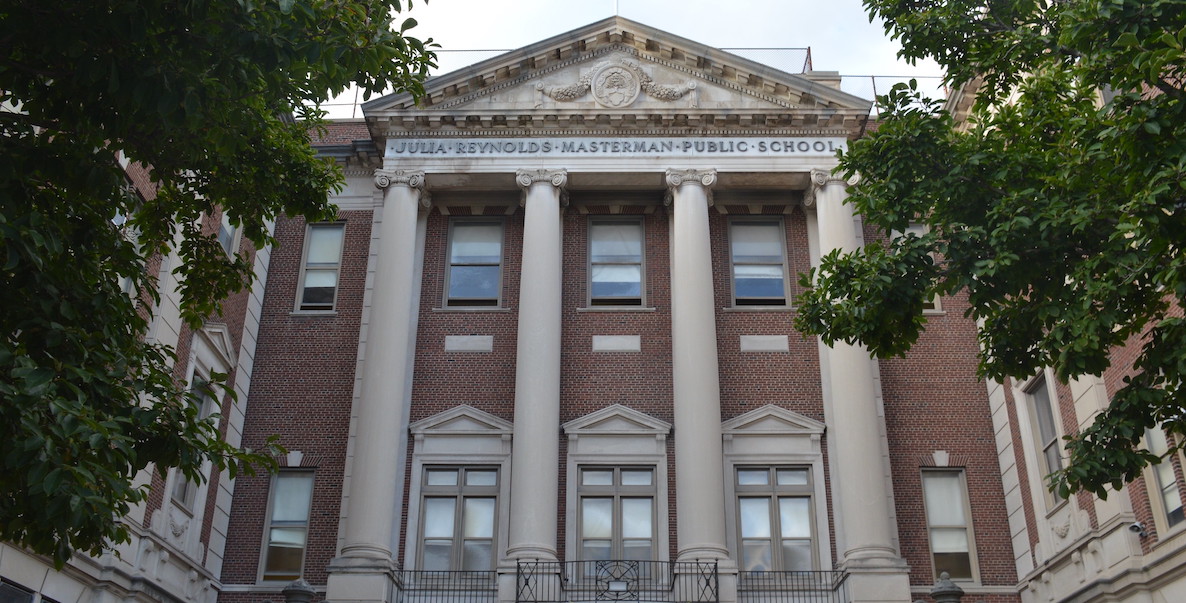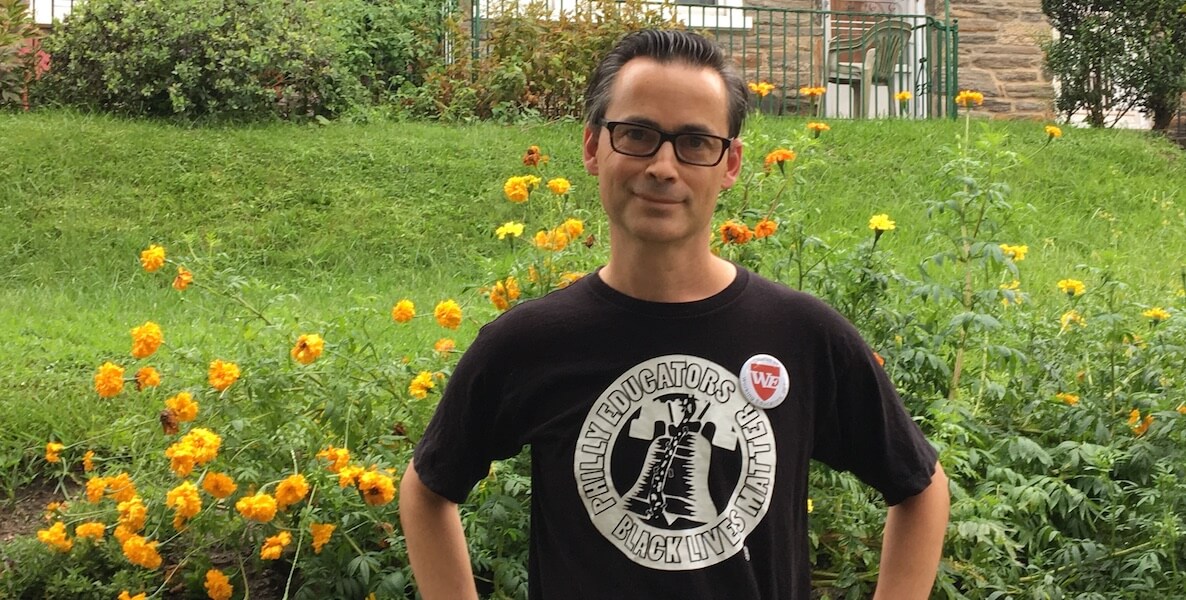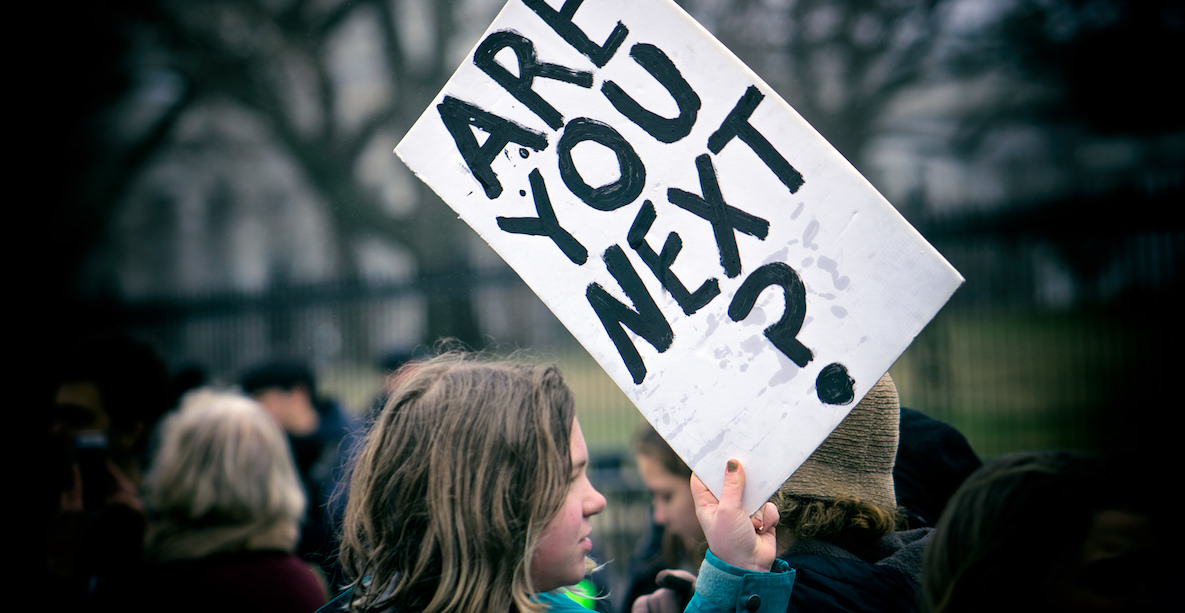It is a fact of American parenting in 2019 that the specter of a school shooting is always, somewhere, on your mind. In Philly last week, that fear was magnified for parents with children in the 10 schools threatened with some sort of violence in an anonymous Instagram post on Wednesday night.
Police saw the threat, alerted the schools, sent extra officers, and launched an investigation which by Friday had found the idiot who made the threat and determined it was a hoax. (The threat was issued against high schools Masterman, Palumbo, Franklin Learning Center, School of the Future and Central; and South Philly elementary schools Jackson, Kirkbride, Vare-Thomas, Fell and Mastery Thomas). Schools, in turn, kept parents updated via robocalls and emails, which meant hundreds of parents all across the city had to think about the unthinkable.
They reacted in different ways. In one parental text chain on Thursday, there was calm and skepticism. A mom of a high schooler reminded everyone that bomb threat hoaxes were a common tactic to get out of school in the 80s (though, of course, no schools were actually bombed, which made those threats less troubling), and everyone agreed that police seemed to have it under control. In another text chain, though, parents were panicking because their kids—who heard bits and pieces of information, spread rumors in the halls, heard helicopters hovering above the school, saw the uniformed officers—were panicking. Some parents rushed to pick up their kids from school, causing additional confusion.
There are 56 million school-aged children in America this year. By far more of them will die in accidents. And, tragically, by far more of them will commit suicide or be shot in their neighborhoods than in their classrooms.
That it all worked out was the most likely scenario. And it seemed to be handled in the best way possible, by schools and police. But it’s a sign of the times that we weren’t really sure how it would turn out, because of maybe the worst sentences to ever have to utter, in speech or writing: We live in the age of mass shootings. And those mass shootings, terrifyingly, happen at schools more often than they should—which is to say, at all. Since Columbine, some 150 children have been killed at school. That is a horror.
But that does not make it common: There are 56 million school-aged children in America this year. By far more of them will die in accidents. And, tragically, by far more of them will commit suicide or be shot in their neighborhoods—Philly had nearly twice as many people killed by gunfire last year alone, most of whom were young black men—than in their classrooms.
![]()
It’s the cruel twist that makes mass shootings so frightening, of course: A place of safety, like a school or a house of worship, turned into a killing field is terrorism at its highest level. And so we react as we often do with terrorism, by grasping for things that seem like they will provide a modicum of safety, while failing to address the hard, underlying issues: Bulletproof and transparent backpacks (American capitalism at its best); security consultants; metal detectors; calls for arming teachers. And, of course, active shooter drills, which are now a common part of the school year for children as young as five.
The result of all this? More terror, certainly. A Pew study from late last year found that 57 percent of American students were “very” or “somewhat” worried about a shooting in their school, a worry that is not productive. As Andrew Rotherham at nonprofit education news site The74 put it:
This level of anxiety is not welcome civic engagement. Students can be engaged on the gun issue without being scared. Anxiety is not something to be encouraged in young people, or even quietly tolerated. Rather, it’s something responsible adults tamp down— in this case, by helping students understand that while gun violence is a problem, gun violence in schools is less so. It’s a teachable moment about race, class, and complicated public policy problems.
Yet instead of calming students or helping them understand the situation, too many people are playing to their fears. Some schools are talking about arming teachers with buckets of rocks or bats, or with guns. Here in the education world, it’s hard to miss the perverse irony that some of the very same people who could not stop talking about how academic standards and tests traumatize kids seem to think nothing of scaring young people about their lives being at risk in school.
It also does not necessarily lead to more safety, as James Hamblin noted in The Atlantic after the attack in Parkland almost exactly a year ago:
Studies of whether active-shooter drills actually prevent harm are all but impossible. Case studies are difficult to parse. In Parkland, for example, the site of the recent shooting, Marjory Stoneman Douglas High School, had an active-shooter drill just [a] month [before the massacre]. The shooter had been through such drills. Purposely countering them may have been a reason that, as he was beginning his rampage, the shooter pulled a fire alarm.
![]()
Teachers on the front lines of all this are the heroes—they are expected, in some parts of the country, to be trained gun-toting security guards, and in every other part of the country to be the first and last line of defense for terrified children against the (often) children who are shooting at them. But we are all responsible for this problem, and—parents or not—we have to take charge of putting this era of American history behind us. We can do that. We no longer (at least for now) have pointless nuclear war drills because we reduced the imminent threat, and the fear that went with it.
So what should we do?
First of all, don’t panic. And don’t panic your children. This has some good ideas about how to talk about violence with your kids.
Spread the word about Safe2Say. In January, Pennsylvania became the first state to require all schools start using the Safe2Say Something Anonymous Reporting System, created by Sandy Hook Promise, that lets users send tips about potential threats via an app or website to a call center at Attorney General Josh Shapiro’s office. The center then assesses the threats and alerts schools and districts as needed. In the first week alone, some 615 tips came in through Safe2Say—which will cost about $1 million to operate this first year—and several hundred were passed on.
A Pew study from late last year found that 57 percent of American students were “very” or “somewhat” worried about a shooting in their school, a worry that is not productive.
Put threat assessment teams in every school district. Safe2Say is a good warning system. But it won’t be enough without safeguards in place to handle students who are potential threats. After the shooting in Parkland last year, The Citizen ran a story about threat assessment teams, made up of educators, mental health professionals, and police, that identify and manage threatening behavior before it turns violent. The teams are trained to determine if a threat is real or just talk; to assess a student’s mental and emotional state; to take legal action if necessary; and to provide the student with the mental health services needed to get past their anger or isolation. In Virginia, which became the only state to mandate threat assessment teams in every K-12 school after the Sandy Hook school shooting in 2012, the results are clear: A University of Virginia study of 1,865 cases in 785 schools found that 30 percent of investigated threats were serious; after the team’s intervention, only one percent of the acts were carried out—and none resulted in the shootings or stabbings that had been threatened.
That’s why it was one of the recommendations from Gov. Tom Wolf’s School Safety Task Force Report that came out last August, and why a bipartisan group of legislators introduced a bill in the state House last week to provide for these teams across the state. Call your reps and tell them to bring it to a vote as soon as possible.
We are all responsible for this problem, and—parents or not—we have to take charge of putting this era of American history behind us. We can do that.
Enact common sense gun laws. Despite Parkland and the Tree of Life Synagogue shooting in Pittsburgh, the state ended 2018 with just one new gun safety law, requiring people convicted of domestic violence or subject to a restraining order to surrender their guns within 24 hours. (Meanwhile, more than 65 gun safety bills in 26 other states were enacted.) It failed to pass several others that were introduced, including one with bipartisan sponsors that would have allowed for Extreme Risk Protection Orders—otherwise known as a “red flag” law. (The Citizen ran a story about this last year, too, after hearing Sandy Hook mom Nicole Hockley talk about it on MSNBC after the Parkland shooting.) An ERPO works much like a restraining order: it allows a family member or law enforcement official to petition a judge with evidence that someone is posing a threat to themselves or others. If the judge agrees, police can then temporarily seize their firearms.
We don’t know much about the person who posted last week’s hoax, but Florida police have said that Nikolas Cruz, the Parkland shooter, had given his late mother and neighbors reason to think he might be a threat. Could an ERPO have prevented his having a gun on hand to take into Marjory Stoneman Douglas High School? It’s hard to say. But ERPOs have also been found to prevent suicide, two-thirds of which are by gun in America—and that’s reason enough to pass an ERPO law here. Legislators, including Montgomery County Republican Tom Killion, are planning to reintroduce ERPO legislation in Harrisburg this term, though it faces an uphill battle. Your legislators need to know if you think Pennsylvania should be among the 10 or so states with ERPO laws.
![]()
Remember—and curtail—the everyday violence. The fact that school shootings are rare does not mean our city’s young people are safe. In 2018, 1,376 people were shot in the city, including 249 who died from their wounds. (So far this year, we’ve surpassed last year’s numbers.) Nearly 50 percent were aged 25 and under. That means kids leave school and head to neighborhoods where gunshots are a regular thing. Meanwhile, the police department’s homicide clearance rate is an abysmal 44 percent. Detectives blame understaffing and a cut to overtime, the difficulty of finding witnesses willing to testify, and a change in criminal justice practices. This is the real horror. Why is this not what we’re talking about all the time?
Help Philly’s schools get better. In one of the threatened schools, an administrator told 5th graders that every year, when high school admissions results go out, there are disgruntled students who react angrily (though not always with threats). Every part of that sentence is terrible. Of course, people are disgruntled. Their future depends on their now, and the now of too many schools is still not good enough to guarantee that future is bright. (Though, yes, there has been progress.) We need more guidance counselors in schools, better physical facilities for the health of students and teachers, a more equitable funding stream to account for the needs of our city’s neediest. Those are biggies, but even smaller things can push schools forward. Start here for some ideas.
Listen to the children—and encourage them to vote. Since Parkland, we’ve taken new notice of young voices in America, and they are—understandably—pretty mad. It’s not just violence they care about, but also climate change and the cost of living in America—things we older generations have, frankly, really screwed up. Experts credit the Parkland survivors, and the marches they inspired, for the some of the gun legislation that passed last year. And, young people are voting, too. In Philadelphia, in part thanks to Vote That Jawn, led by Penn’s Lorene Cary, and the efforts of high school teachers like Central’s Thomas Quinn, 6,782 first-time voters registered for the 2018 midterms—a 136 percent surge over 2014. Let’s keep that going. Go here for Quinn’s guide to registering high school seniors. (It’s from the fall, but applies to the primary, as well.)
Vote. Will this be the year that legislators in Harrisburg enact laws to keep our students safe? Will we elect a City Council willing to push for needed changes that will keep all of us safe? That depends on us—and who we have, and will, elect. So do your part.
Header Lorie Shaull via Flickr


